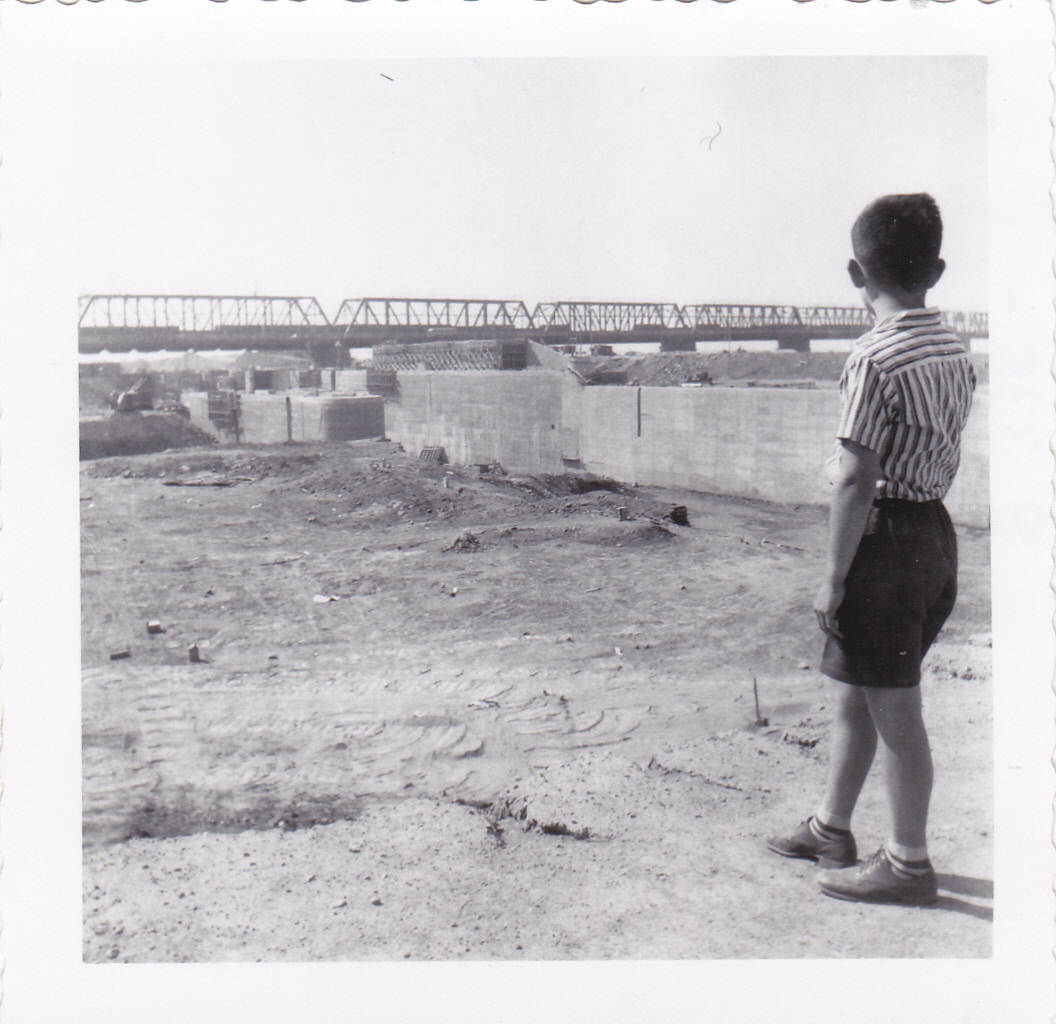On a regular basis I read horror stories about the poor quality of the waters in the St. Lawrence River, stories that should raise the ire of the population but that seem to fail to attract attention. The St. Lawrence is a beautiful river but only on its surface. Its waters are polluted to a point where the damage might be irreversible.
The St. Lawrence was part of my childhood; I fondly remember the Sunday morning walks, just after the church service, with my father and brothers, along its tree-lined shores. It was possible to get to the water’s edge by going down a short path just in front of the cemetery. Once there, we would throw rocks in the water a favourite past time of children, much to the annoyance of the fishermen who were always there. They would forgive us when we supplied them with crayfish, a favourite bait, that we would find hiding under the rocks.
A few hundred feet from shore, we could see l’Île Verte, a small island covered with green shrubbery; my father liked to tell us that one day we would enjoy, like he did, our visits there with friends. It was only later that we understood that he meant girlfriends. To the teenagers at the time, the island was better known by the self-explanatory nickname “l’île aux Fesses”.
I was born in St. Lambert, a short distance, from the shores of the St. Lawrence. The river was accessible and was part of my life. Never did we think that this country setting could be taken away but that’s what happened in 1956 with the construction of the Seaway and the 132. Our Sunday walks on its shores were replaced by walks along a construction site. I must admit that for a ten year old, such a construction site was impressive. At that age, I did not realize what was happening in front of my eyes; I was losing my access to the river and, as a consolation prize, we were given a swimming pool and a large parkland along a major highway. This disaster was referred to as progress.
My children were also born close to the river, but they did not enjoy it like I did. For them the St. Lawrence was nothing more than an obstacle to cross when travelling to Montreal. The River is always there but we don’t see it. The St. Lawrence is absent from the lives of my children and grandchildren. I would like the river to be part of the lives of my great-grand-children, not as an asset to be exploited, not as an obstacle to be crossed but as an asset to be enjoyed.
I have decided to make the St. Lawrence River the subject of a series of blogs that I intend to publish over the next weeks. It will be my contribution in an attempt to make you aware of the pollution that lies, unseen, below its surface and to raise public awareness of this tragedy.
Do not hesitate to share this blog.


Great!
J’ai passé mon enfance entre Varennes et Vercheres à ll’epoque …Il n’y avait pas de cueillette des ordures en campagne. C’etait le fleuve!
Parfois même les bateaux vidangeaient leurs huiles usées dans le fleuve…
Je me souviens très bien que presque tous les dimanches lors de ma jeunesse nous allions souper chez mon grand-père qui demeurait sur Riverside au coin de Merton. Aussitôt arrivé nous (mes deux frères et moi) nous empressions a traverser la rue Riverside pour descendre un petit escalier en bois qui menait a un petit quai ou mon grand-père avait une chaloupe a rame que nous empruntions pour aller faire un tour sur la rivière. Ah, the good old days!
Beaucoup de souvenirs que nos enfants n’auront pas.
I went to Preville school in 1967 but we moved on Des Flandres in 1970, close enough for a young child to access the river via the underpass at the end of Simard.
Thank you for your article, it has filled-in many questions. Things I wondered about as a kid who also grew to love the river or more accurately, what remnants remained for my generation in the canal. However, at the time I didn’t realize how fortunate I was considering my continued direct access (to the river) what to rest of Saint-lambert had lost.
I re-built a kaiak as a 12 year old (days before the x-box) and would occasionally roll it to the canal on my little wooden wagon when my father wasn’t home. I would paddle that little boat and wonder why the water couldn’t be cleaned. Since the canal is a smaller body of water, I thought it would be significantly easier to manage its water quality. Incidentally, I still think this goal can easily be achieved and directly benefit; Saint-Lambert, Brossard and La Prairie.
This would turn the South Shore into a wold class resort type destination thus justifying our exorbitant Saint-Lambert property taxes.
Thanks for the comment. The city could certainly do better for access but without pressure from the population nothing will be done.